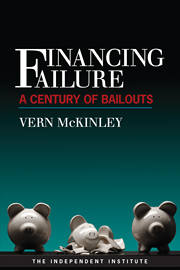Mitt Romney is hoping that he can defeat President Barack Obama by focusing on the weak economy. But can he? For the answer, we need to examine the linkage between economic cycles and election cycles.
A recession is a period of diminishing economic activity, a concept that tracks broad trends in the economy. These trends are what most Americans will be looking at when they vote in November.
Historically, it has taken a recession in the two-year window before a presidential election for a challenger to knock off a sitting president. Data on recessions from the National Bureau of Economic Research (NBER) integrated with the relevant election results gives us the following summary of sitting presidents unceremoniously removed from office over the past century:
George H.W. Bush got the boot in 1992 after the recession of 1990-1991. Jimmy Carter got the boot in 1980 after the recession of early 1980. Gerald Ford got the boot in 1976 after the recession of 1973-1975. Herbert Hoover got the boot in 1932 after the recession that started in 1929 and ran to the election. William Howard Taft got the boot in 1912 after the recession of 1910-1912.
Going back even further, Benjamin Harrison and Grover Cleveland were both removed from office after recessions in the two-year window before their elections. In fact, this formulation holds for every case of a deposed incumbent going back to the 1850s, which is as far back as NBER’s data goes.
However, the most recent recession ended more than three years ago, outside the two-year window. And since there are no definitive signs we are currently in a recession, the prospects look quite good for the president. Like re-election winners such as George W. Bush, Ronald Reagan and Franklin Roosevelt before him—other incumbents who saw downturns early in their first terms—he is benefiting from a bounce-back late in his term. The inflection point between winners and losers appears to be around two years before re-election.
Republicans could argue that this has been a pitiful recovery and that it stacks up poorly against the Reagan-era recovery of the early 1980s, which followed a similarly deep recession with unemployment peaking in the double digits. That is all true, but foremost in most people’s memories is not the Reagan recovery of 30 years ago but the recession that started under Bush in late 2007 and which consumed the last presidential campaign in 2008.
The reality that the current weak economy looks good in comparison only emphasizes the deep hole of late 2008. Bush left office in the midst of a financial collapse, panic-induced bailouts and deep debt used to finance, among other things, unpaid-for wars.
Republicans could argue that 8 percent unemployment is a lethal level for an incumbent to defend. That is also true, but the same thing was said when Reagan was running in 1984 with unemployment above 7 percent and Roosevelt was running in 1936 with unemployment well into the double digits. Both Reagan and Roosevelt won decisive landslides while losing a miniscule number of states.
These examples suggest that what matters to voters is the general trend of the economy at the time of the election, as opposed to the precise level of unemployment.
Republicans could argue that the forecasts of the positive effects of the 2009 stimulus were wildly overstated by the Obama administration and thus the administration’s policies failed according to its own benchmarks. After all, the economic brain trust in the administration said that if the stimulus was passed, unemployment would be below 6 percent by now.
True again, but most voters are not aware of just how wrong the Obama economists were. In any case, every White House puts out rosy forecasts.
Based on the historical record, and despite all arguments against the performance of Obamanomics, it looks like the recovery has been strong enough to give the president four more years.







